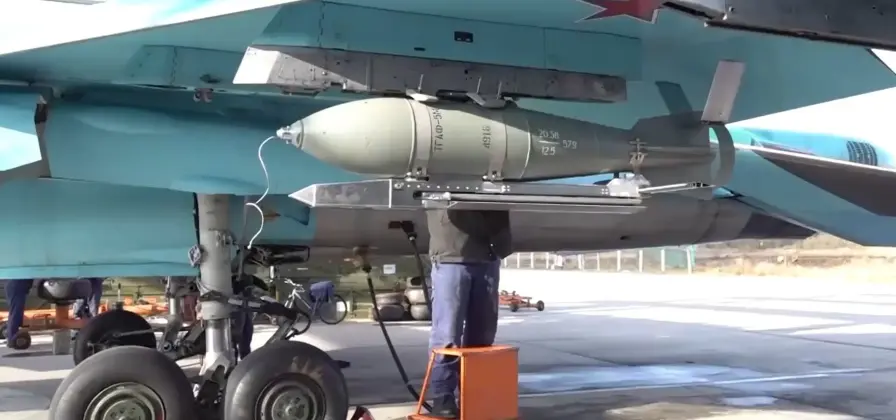News
Russia Finally Putting Su-57’s Drel Precision Cluster Bomb into Serial Production as Formation of First Stealth Fighter Regiment Nears
Russian state-owned defence conglomerate Rostec has announced that it is set to place the PBK-500U Drel 500kg precision guided cluster bomb into serial production in 2024, and that the weapons system has “already undergone all types of tests specified by the customer” – namely the Defence Ministry. The bombs were designed to serve as the primary gravity weapon deployed by Su-57 fifth generation fighters, which saw production surge to 12 fighters per year in 2023 which more than doubled the fleet size to 22 aircraft. The Drel is also expected to serve as a primary armament of the country’s fast growing fleet of Su-34 strike fighters, which have been acquired at a greater rate than any other fighter class since the Soviet era and began entering service as the enhanced Su-34M variant from July 2022. Both fighters benefit from limited applications of stealth technologies, have over double the range of any Western fighter class, and can also carry very long range strategic cruise missiles usually only deployed by heavy bombers. The two are the only Russian fighter classes currently in production which are expected to see orders continue to be made into the 2030s.

The Drel bomb’s guidance systems provide “fire and forget” capabilities meaning they do not require illumination of its targets or wire guidance by an aircraft. The bombs use inertial and GLONASS satellite guidance to maximise precision, and have an identification friend or foe system and electronic warfare countermeasures. Guidance systems are reportedly well optimised for engaging fast moving targets. Each bomb contains fifteen self-guided anti-tank element charges which weigh around fifteen kilograms each, with these high payload sub munitions combined with the bomb’s precision allowing a very small number of Drels to cause tremendous damage that would require multiple bombing runs if using older bombs. A single Drel cluster of the bomb’s sub munitions are estimated to be sufficient to destroy an entire missile battery or a tank column. With the Russian Air Force set to form its first full strength Su-57 fighter regiment in early 2024, and field one and a half regiments’ worth of the aircraft by the end of the year, it remains uncertain what quantities Drel bombs will be in service by that time, if at all, and whether they will first be deployed by Su-57 units or by Su-34s.

The timing of the Drel bomb’s announced imminent entry into serial production comes as Western and Ukrainian forces have increasingly highlighted with great concern the potency of Russian Air Force bombing missions using a range of glide bombs against Ukrainian Army frontline positions, which personnel have described as opening the ‘gates of hell’ due to their potency. The Drel has similar glide properties allowing it to be dropped close to 50km away from its targets, and according to some reports much further, although its precision guidance capabilities are significantly superior to those of existing bombs. While reports from Ukrainian personnel on the frontlines indicate that existing Russian glide bombs are already considered effectively impossible to shoot down, the Drel’s design has provided a significant further boost to its survivability with a much reduced radar cross section. It remains uncertain how many of the bombs Su-57s will be able to carry in its internal weapons bays, or whether their reduced radar cross sections could allow the fighters to carry them externally without significantly undermining their own stealth capabilities.












